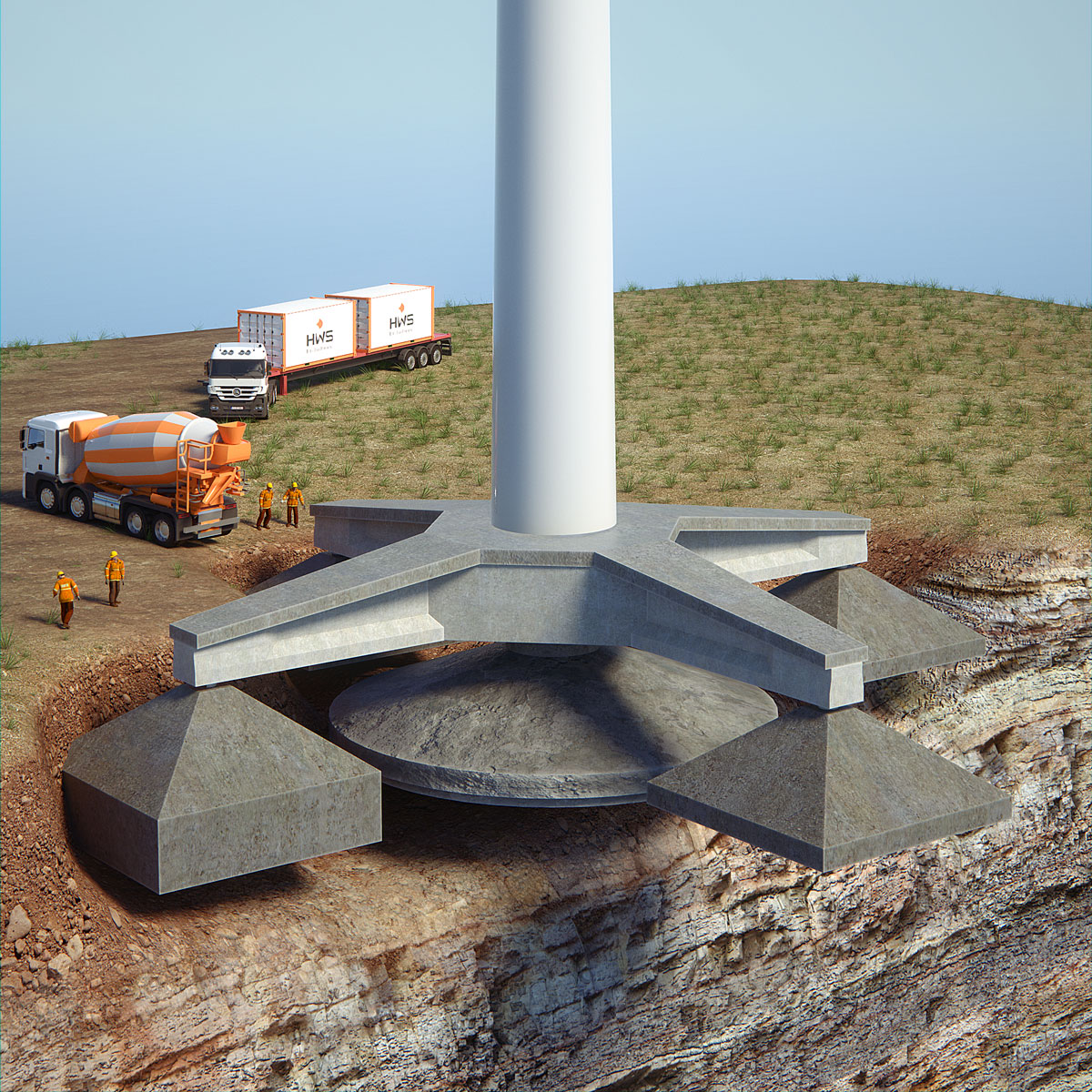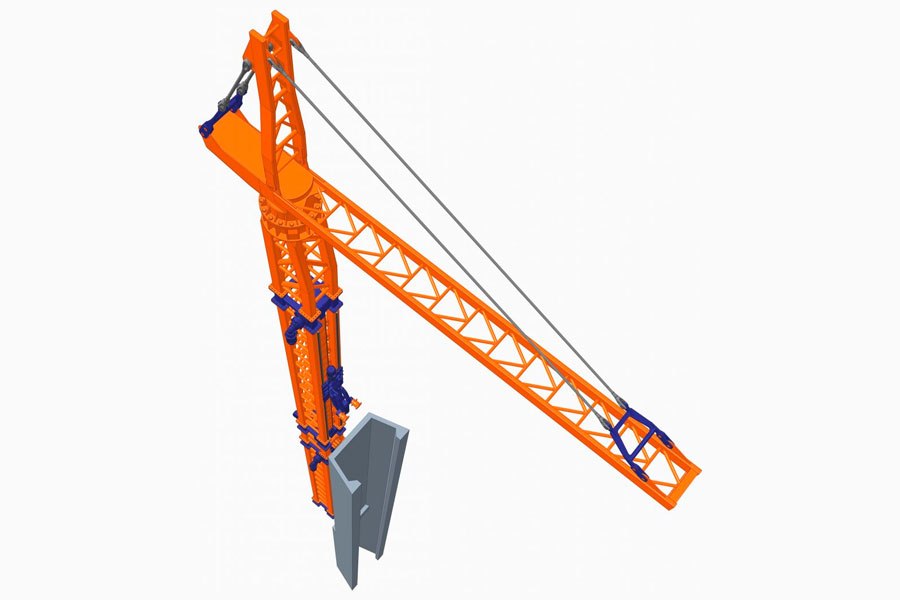
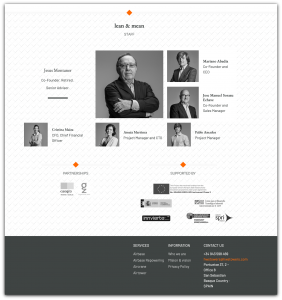
 hhHWStowersUU
hhHWStowersUU
“Concrete Towers for Wind Turbines and Structural Damping” (HWS)
The wind market is demanding higher wind turbines, and even though engineers are doing a great job optimizing current steel towers, we are about to reach the limit of this technology.
As an example, this video shows a slender wind turbine vibrating at its second bending mode excited probably by high wind velocities.
- How much is this phenomenon affecting the fatigue life of the system?
- Have we reached the boundaries of steel tower designs?
Hybrid or full-concrete towers could avoid these vibrations thanks to their higher structural damping. Could an ancient material—like concrete—be the solution?
“HWS presents its new product development: AirBASE RePOWERING” (HWS)
HWS has developed the AirBASE RePOWERING, an innovative precast concrete structure for repowering purposes that allows to reuse the old foundations while making the most of the existing infrastructure in the wind farm.
This new product is based on HWS’ AirBASE technology: a new disruptive structural concept for wind turbine foundations, which is being successfully introduced in the wind energy market due to its cost-effectiveness.
AirBASE RePOWERING reuses the existing old foundation as ballast to improve the stability of the system, while adding on top two new precast girders in a cross-shape. The system is valid for any kind of soil and compatible with both shallow and deep foundations.
Among its advantages are cost savings of up to 45% when compared to construction of a new foundation, as well as being and environmentally friendly solution. In fact, the AirBASE RePOWERING respects the landscape by avoiding occupation of new sites, construction of roads and working platforms, and demolition of existing infrastructure. In addition, it could help simplify the permitting process required for installation of a new wind farm.
In conclusion, the AirBASE RePOWERING could become the optimum solution for repowering wind farms from the decade of the nineties, which are close to their end-of-life.
Repowering of existing wind farms
The first installation of a wind farm dates back to 1975 in USA. In Europe, VESTAS produced the first wind turbine in 1978. Since then, commercial installation of these machines has progressively increased reaching in 2019 a total installed capacity of 651 GW, among which 251 GW are in Europe. In both cases, onshore wind has a high share of around 90% of the given figure (source: Wind Europe & Wood Mackenzie ).
Europe has committed to meet a 30% share of electricity generated by renewables in 2030. Nowadays, 15% of the electric energy produced by European countries (EU-28) comes from wind resource. To deliver on this objective, it is foreseen that the installed wind energy power will have to be doubled in the next 10 years. In the meantime, by 2030, 50% of the current cumulative installed capacity in Europe will have reached the end of its operational life.
With this need to increase wind energy generation and the wind farms coming to their end-of-life period, the industry is considering the two following strategies:
➜ Lifetime extension: Some of the components of an existing wind turbine are upgraded (e.g. generator). The overall external layout of the farm remains unchanged (e.g. hub height, siting, size) (…). Depending on the Member State, this option is also referred to as refurbishment, enhancement, reactivation.
➜ Full repowering: The wind turbines are dismantled, and new more powerful wind turbines are installed. This also involves replacing other elements like the tower and the foundation, which should be accordingly designed for the new turbine.
Onshore wind farm owners are currently finding much more attractive to extend the life of existing projects, since replacing foundations involves complexities and is expensive. However, as project life extension options are exhausted, owners will have to increasingly turn their attention to repowering.
This market demand has encouraged HWS to develop a new product: AirBASE RePOWERING. This technology faces the challenges of foundation replacement, making repowering much more appealing.
WindEurope estimates that the yearly repowering volume grows from 1-2 GW in 2017 and stabilizes to 5.5-8.5 GW by 2027. The main markets will be Germany, Spain, Italy, Denmark, Portugal and France.
Source: WindEUROPE (www.windeurope.org),
June 2017, “Repowering and Lifetime Extension: making the most of Europe’s wind energy resource. THE EUROPEAN WIND INDUSTRY’S VIEWS ON MANAGING WIND ENERGY ASSETS AT THE END OF THEIR OPERATIONAL LIFETIME” (https://windeurope.org/policy/position-papers/repowering-and-lifetime-extension-making-the-most-of-europes-wind-energy-resource/).
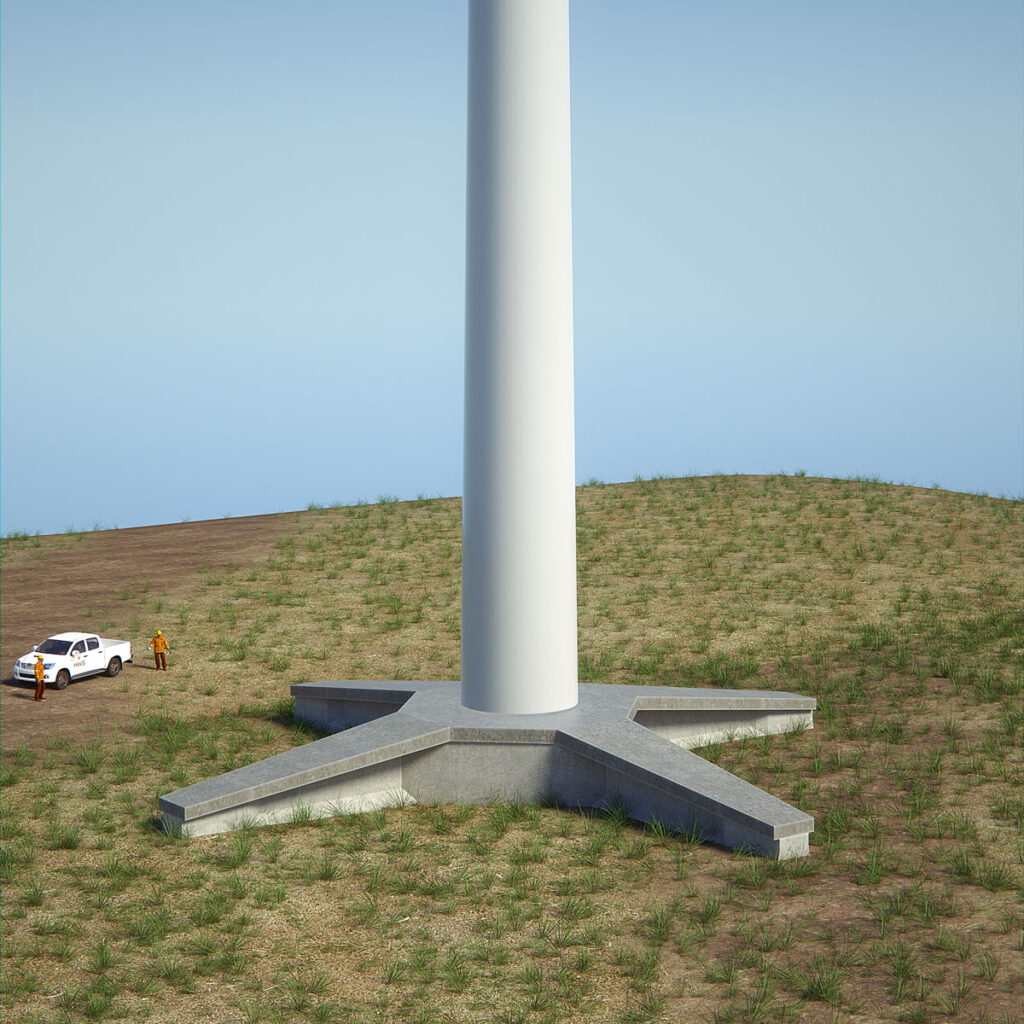
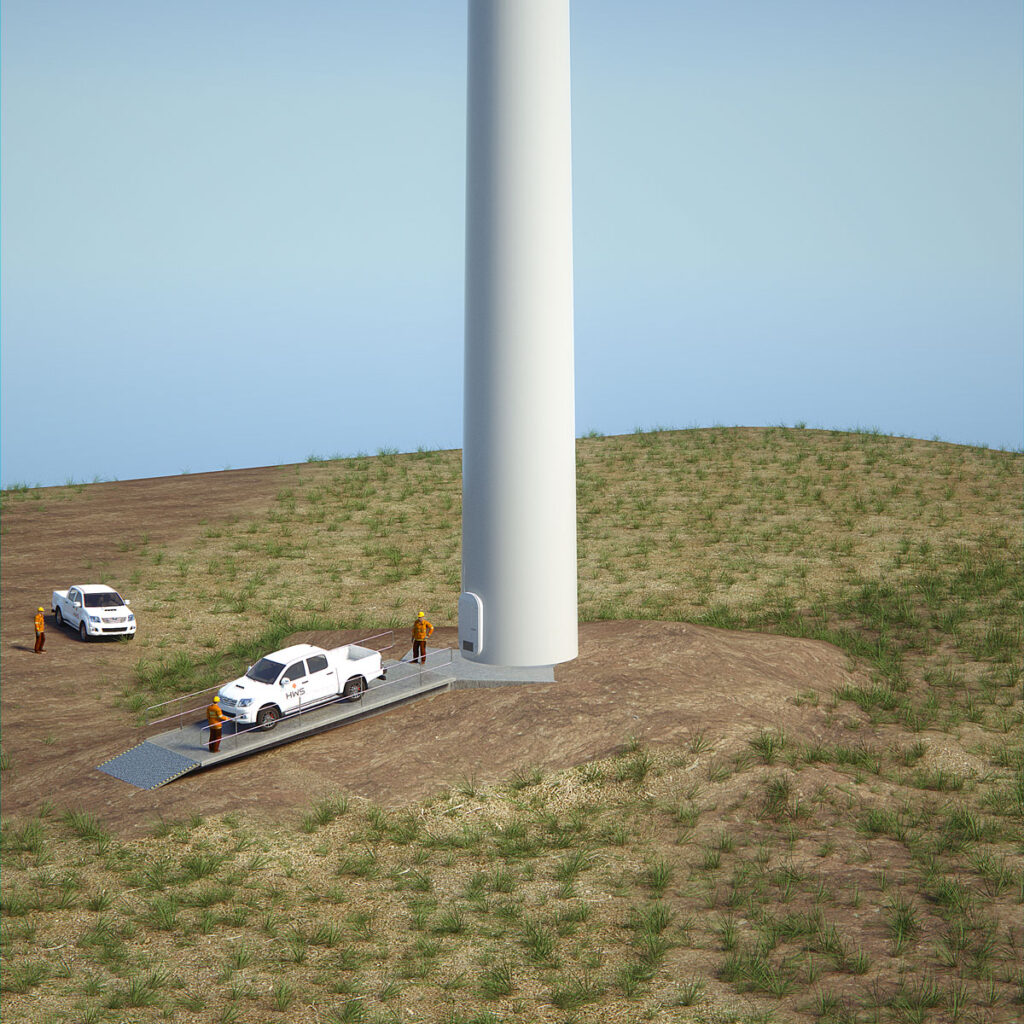
“The HWS Self-Climbing AirCRANE is taking shape” (HWS)
We are happy to share how the AirCRANE is taking shape in Zizurkil (Guipuzkoa, SPAIN) and Lekunberri (Navarra, SPAIN).
After a long journey, it has become a reality!
Main Jib.
Designed to be scalable and configurable to install any wind turbine in the market, the AirCRANE system is a cost-effective alternative for concrete towers of unlimited height. Its versatility makes it useful not only for installation and maintenance of wind turbines, but also for construction of bridge piles, central cores of skyscrapers, chimneys and many other applications.
Any of its design parameters can be adapted to the operational requirements, e.g. the height of its steel lattice structure is defined by the distance between the anchorage points. In the case of the attached figures, each climbing step has been set to 7 meters height, leading to a minimum of 20 meters length climbing structure. At present, HWS is confident to complete the manufacturing and testing of the first AirCRANE by summer 2020. This unit will demonstrate its capabilities close to its manufacturing site by climbing a precast-concrete girder in vertical position (see attached pictures), which simulates a wind tower. Afterwards, HWS will display the AirCRANE at Wind Europe 2020 in Hamburg





“AirBASE, a disruptive new solution for ONSHORE Wind Turbine FOUNDATIONS.”
The AirBASE, an innovative partially-precast foundation for Wind Turbine Generators (WTG) was patented in December 2018. Since then, HWS has studied its feasibility in different scenarios, covering a wide power range of TURBINES (from 2.X MW to 5.X MW), SOIL properties as well as TOWER heights from 90 m to 165 m, made in both STEEL and CONCRETE.
The AirBASE disrupts current STRUCTURAL FOUNDATION CONCEPTS by transferring the loads to the soil through four separated supports. These footings are connected through a pin-hole to two (or four) precast girders placed in a cross shape, PREVENTING the transfer of MOMENTS to the SOIL.
Among its advantages are the INDUSTRIALIZATION and STANDARDIZATION, which REDUCES THE RISK of projects by enhancing the quality control process and reducing construction time as well as on-site resources.
Focusing on COST-EFFECTIVENESS by balancing required materials with labour cost, HWS has developed several versions of the technology, each targeted to different markets, countries, wind farms, sites, etc. Some of these solutions include massive or ribbed foundations, with rectangular or inverted T girder cross-sections.
The performed feasibility and cost analysis prove the competitiveness of the AirBASE in all studied scenarios. While in gravity foundations the concrete volume increases exponentially with the size of the turbine, it rises only linearly using the AirBASE technology. Consequently, up to 35% of concrete volume can be saved.
The cost reduction of the AirBASE increases with the nominal power of the turbine, reaching up to 30%.
The AirBASE is expected to become the leading foundation design for the new generation of 5.X MW turbines at hub heights larger than 150 m, by avoiding casting high concrete volumes (700 – 1.000 m3) onsite.
This way, HWS facilitates the current trend in the wind industry, which is moving towards larger and more cost-effective turbines.
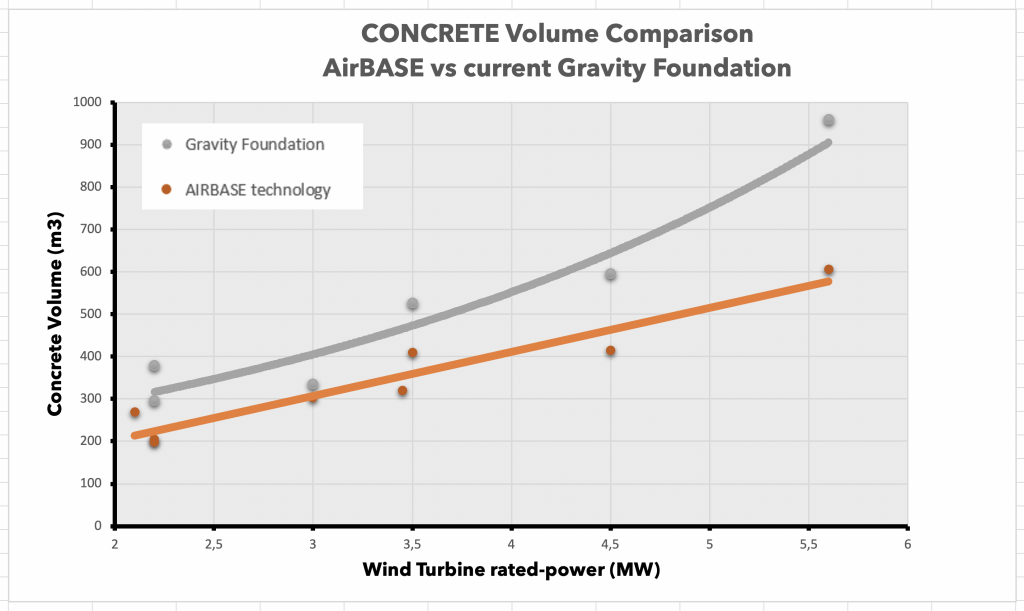

HWS Concrete Towers explica el estado de su Proyecto Empresarial en TV
Desde la feria Wind Europe 2019, en Bibao, donde HWS tuvo un stand integrado en el grupo «Wind Energy, Euskadi – Basque Country», se explica el estado actual del proyecto empresarial, madurando desde la fundación de la empresa, en Septiembre de 2015.
About BUOYANT CONCRETE II: «SHIPS. The GuTian, built in China in the 1970s»
«A derelict concrete ship called Gu Tian is seen at Mawei Economic Development Zone in Fuzhou, China.
The ship has been stranded for more than 30 years. Built in the 1970s, it is the largest cement ship in the world with a displacement of 5,773 tons, measuring 105.2 m-long and 14.5m-wide«
From (1): «Pictures of the day: 21 November 2012», TELEGRAPH.
Read more: (2) «The disappearing ship: Chinese liner made of CEMENT is demolished» (Dailymail.co.uk)
HWS launches the manufacturing of the first AirCRANE
After a long and eventful design phase, the first self-climbing AirCRANE System is finally being manufactured in the north of SPAIN, close to San Sebastián.
Beginning the detailed design of the patented technology, a mechanical expert said: “now the devil is in the details”. By using smart & innovative solutions, HWS Concrete Towers has overcome all the challenges this “devil” presented and developed a reliable and disruptive climbing system.
Designed to be scalable and configurable to install any wind turbine in the market, the AirCRANE system is a cost-effective alternative for concrete towers of unlimited height. Its versatility makes it useful not only for installation and maintenance of wind turbines, but also for construction of bridge piles, central cores of skyscrapers, chimneys and many other applications.
Any of its design parameters can be adapted to the operational requirements, e.g. the height of its steel lattice structure is defined by the distance between the anchorage points. In the case of the attached figures, each climbing step has been set to 7 meters height, leading to a minimum of 20 meters length climbing structure.
At present, HWS is confident to complete the manufacturing and testing of the first AirCRANE by summer 2020. This unit will demonstrate its capabilities close to its manufacturing site by climbing a precast-concrete girder in vertical position (see pictures), which simulates a wind tower.
Afterwards, HWS will display the AirCRANE at Wind Europe 2020 in Hamburg: (https://www.windenergyhamburg.com/en/?ref=WindEurope).
HWS would like to thank the European Commission and specially the project officer for its continuous support and flexibility throughout the project. (Horizon 2020-SM Instrument Phase 2, no. 802858, CORDIS link: https://cordis.europa.eu/project/id/804858)

«Lean & Mean» team spends time together at the annual meal
Once again, most of the HWS «Lean & Mean» team spends time together at the annual meal, in Club Nautico Hondarribia (Fuenterrabia, Spain).
New Year = New goals and challenges, …which require joining new people, specialized professionals.




